Wy I Decided to Shoot Film Exclusively
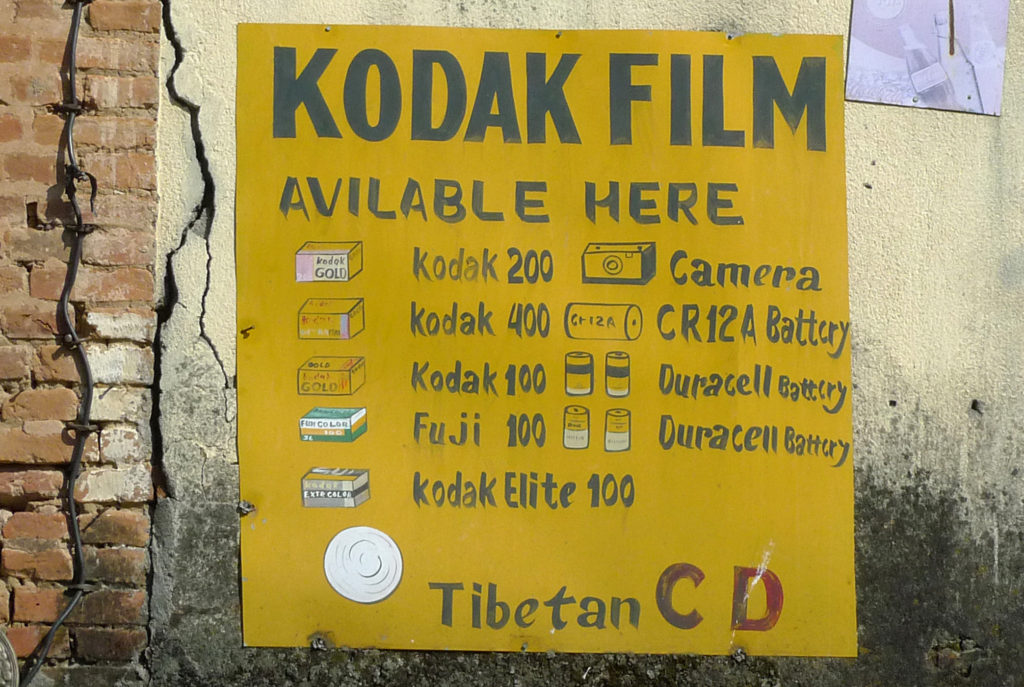
I have recently abandoned digital photography and will sell all my digital cameras. Andreas Gurski shoots film and earns millions, so there must be convincing arguments.

I have recently abandoned digital photography and will sell all my digital cameras. Andreas Gurski shoots film and earns millions, so there must be convincing arguments.
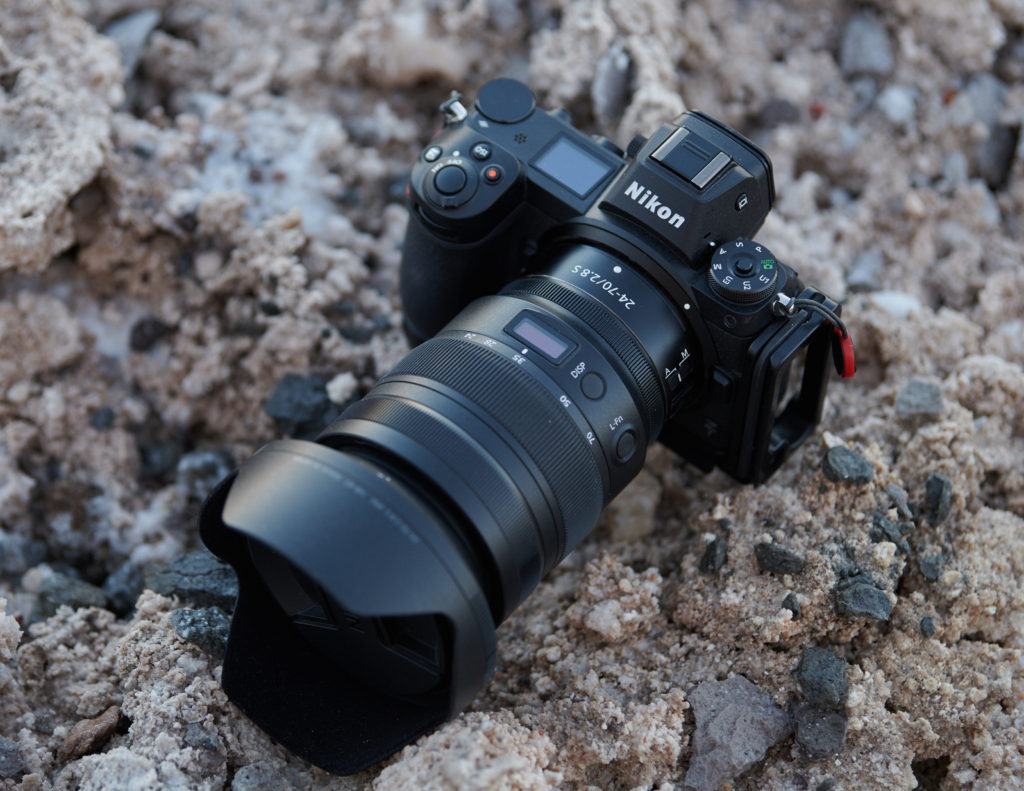
Readers of this blog may have noticed that I followed the crowd and went mirrorless last November. Not in the sense of jumping ship to Sony (as seemingly all bloggers and youtubers these days), but adding the Z7 to the Nikon DSLR kit.
I was recently asked: what if I could keep, or better, carry only one? I am afraid that there is no simple answer, though I would be inclined toward the Z7 since I added the fabulous Nikon 24-70 f/2.8 S lens. Still, I refrained from the clickbait title “The End of the DSLR” for a good reason.
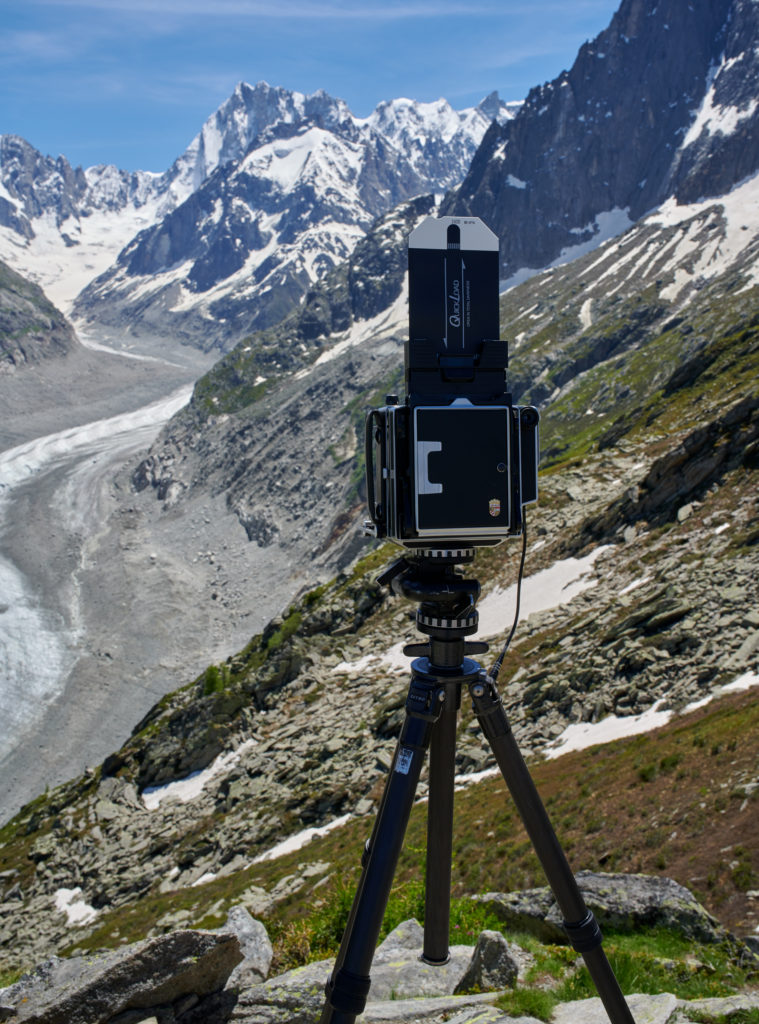
On a view camera a sheet of film must be loaded into a holder. This can be done in the complete darkness of a proper dark-room, in some odd, windowless hotel bathroom, or using a film-changing tent. After the camera has been set up and focused, the holder is inserted into the camera, the dark slide removed from the holder, and the exposure is made. The dark slide is then reinserted, and the film holder removed from the camera.
The standard (Riteway, Fidelity, and Toyo, among others) film holders hold two sheets, one on each side of the pressure plate. The Grafmatic holders held six individual sheets, but they were unreliable. Consequently, one has/had to carry multiple film holders, extra sheet film, the changing tent, and an empty box to store the exposed film. This nuisance kept me away from the view camera for some time.
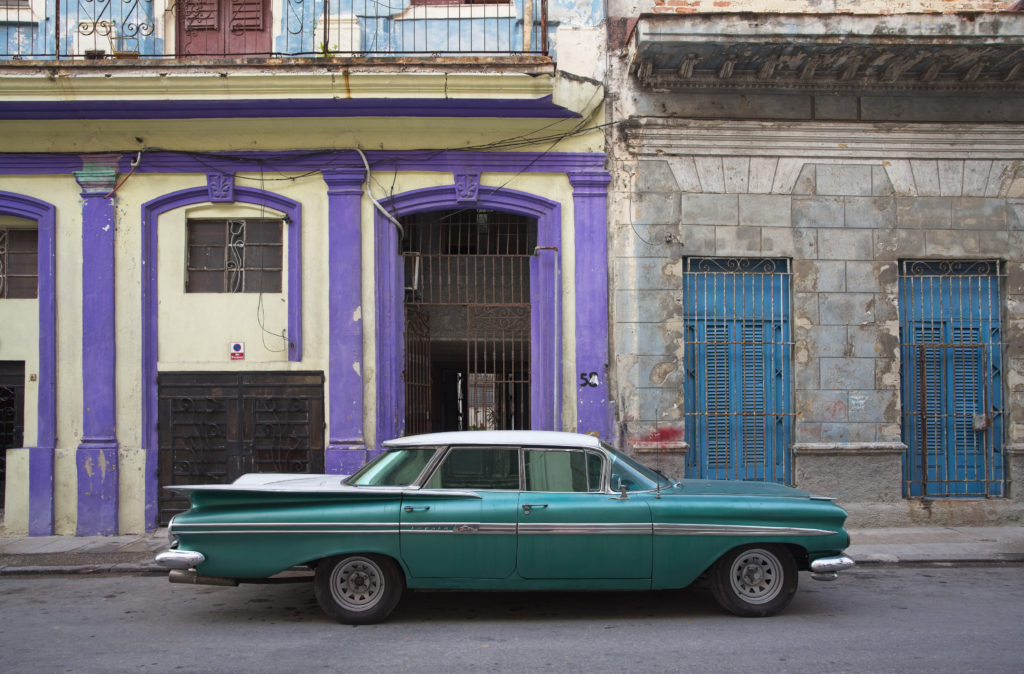
The word badass has both negative and positive connotations, unlike the separate words bad and ass suggest. The positive meaning describes something impressive, admirable, and cool. The negative meaning refers to something frightening and tough.
The tail fins on the 1959 Chevrolet Impala (here in La Habana Centro) are badass. Fins started to appear on American cars in the early 1950s and peaked at the end of that decade. The pinnacle is the 1959 Cadillac Eldorado Seville. The fins supported the concept of design obsolescence; although quite technically similar, the cars and their fins grew bigger every year, so that customers could clearly see the difference between the models.
The geometric-distortion aberrations* of the Nikon 24-70 f/4 S for the Z6 and Z7 mirrorless cameras are definitely badass, whether or not they are a matter of concern will be the subject of this post.
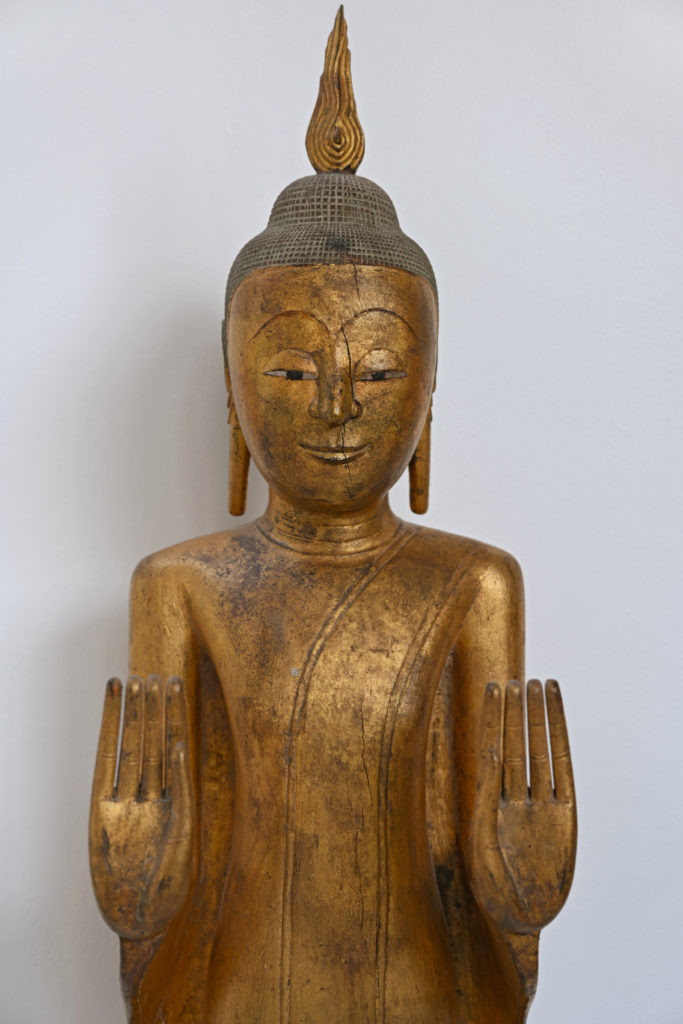
I thought long and hard about the title of this blog, which is a record of my first impressions with the Nikon Z7 kit, including the FTZ adapter and the Z 24-70 f/4 lens. The title shall not suggest that the Z7 is a bad camera, far from it.
The internet is already flooded with hands-on VLOGs from paid-for press events, unboxing videos, and full reviews of the Z7 image quality, although the only available software yet to digest the Z7 RAW files are ACR and Nikon NX-D. But as long as we cannot look behind the curtain and check the amount of in-camera cooking of the RAW and JPEG files, and there is no way to calibrate the color, it makes no sense to post 100% crops of sample images. And I can’t really call this a review.
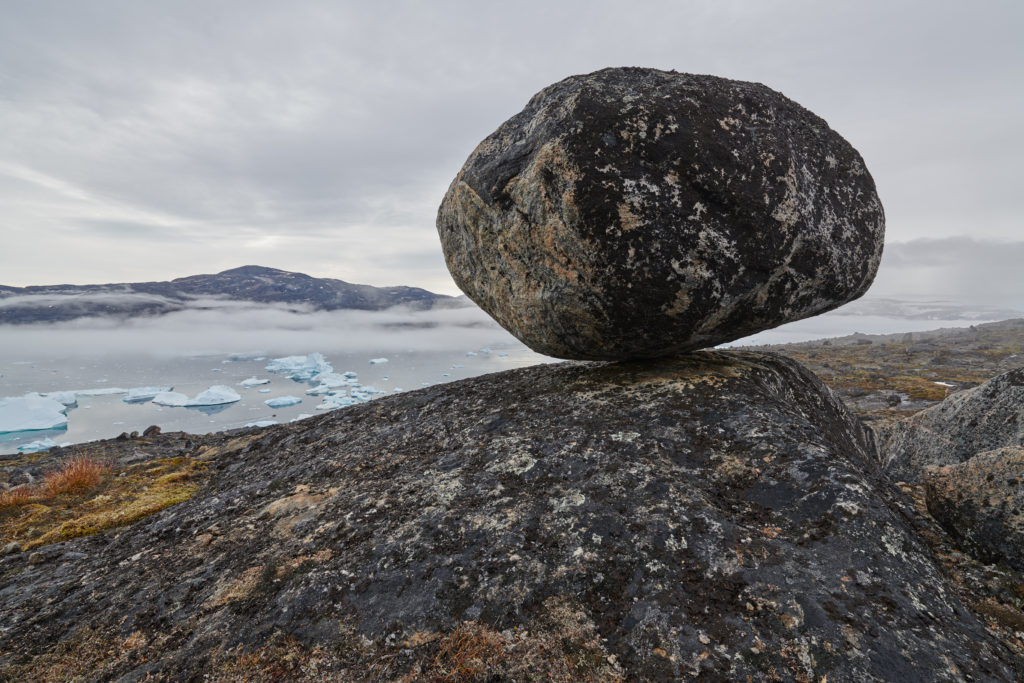
I’m back from an expedition cruise to the Baffin Bay high up in the Arctic between Canada and Greenland, a trip that brought me back to the roots as a landscape photographer.
Landscapes have been my exclusive subjects for more than 20 years when shooting film with a 4×5 view camera. Landscapes require detail. A beautiful scene, matching light (there is no such thing as bad light as everything boils down to finding a subject that matches the light), a solid composition, and exceptional detail in both the shadows and the highlights can create another level of viewing pleasure; the finished print revealing more detail than was perceivable with the naked eye.
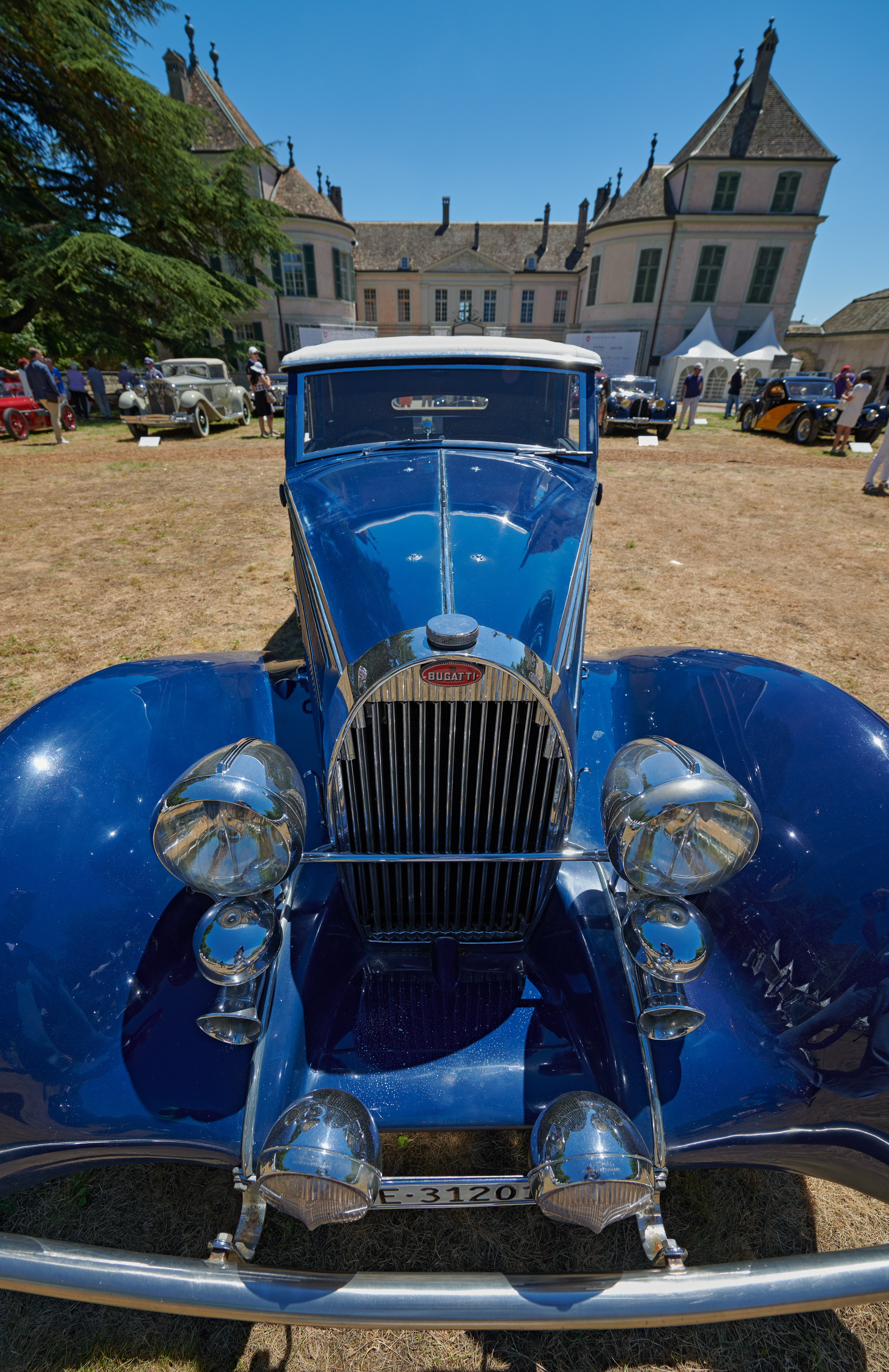
Under a far too bright sun (from a photographer’s point of view), the classic car competition “Concours d’Elegance Suisse” at the Château de Coppet attracted 85 historic cars classified in 15 categories, all defined by a Jury that is also involved in the Concorso d’Eleganza Villa d’Este in Italy and the Pebble Beach Competition in the USA.
While the 60th anniversary of the legendary Aston Martin DB4 and the Ferrari 250 GT Coupe Pininfarina were celebrated by two dedicated classes, the exhibition also included gems such as the Hispano Suiza H6B, Delage D8-120, Bugatti Type 57 S, and the Mercedes-Benz 500K, among others.
This event was a good occasion to bring out my new Nikon D850. Shiny cars in the bright sun are indeed a torture test for the camera’s dynamic range. Judged in many reviews as perhaps the best (last) DSLR on the market, it is surprising that the D850 is still not on stock everywhere. And with the recent QA problems, I had to wait until I could test the flange and sensor alignment in the shop – before pulling out the credit card.
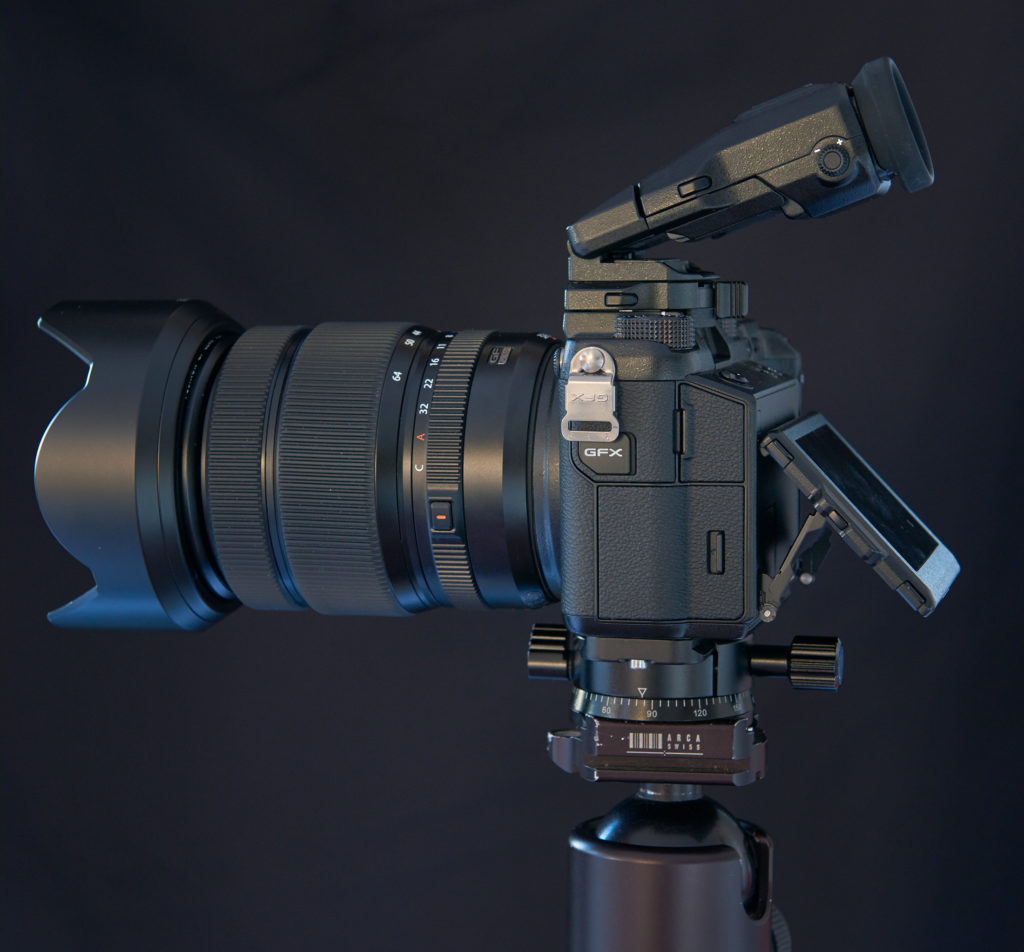
Regular readers of this blog will know that I am lusting for larger formats. This is, of course, a matter of personal preference that results from my established shooting style and two Linhof view cameras waiting for a second life. In the film days the situation was easy; bigger was better. But in the digital world not everything scales with log2.
I could have created click bait by reviewing the hyped-up Hasselblad (X1D) and Fujifilm (GFX 50S) earlier, but wanted to wait until the initial bugs in the firmware are sorted out and Lightroom and/or CaptureOne support the RAW files. Now it’s about time to have a closer look because there is a new option: the 45 mega-pixel, Nikon D850 that is supposedly a leap further in almost all respects.
The question is if I would supplement my workhorse Nikon D810 with the D850 or replace it with a medium format system. There must be compelling reasons for a switch though; most importantly, an expanded shooting envelope in terms of handling and reliability (mainly high ISO capabilities and image stabilization), and image quality (resolution, dynamic range, and tonal separation).
Olympus OM-D Mk II and Fuji X-T2 versus Nikon D810
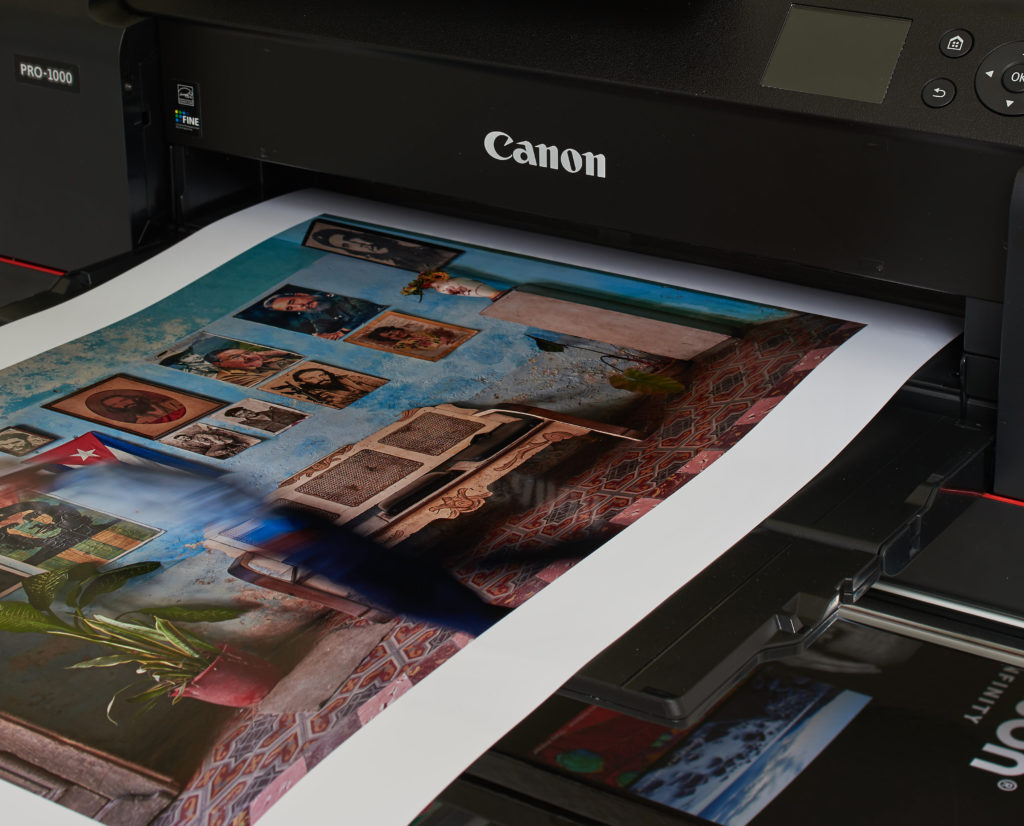
This series of posts will be on getting serious (I hope) about fine-art printing. In the film days I didn’t bother developing and printing myself; first I didn’t have the space for a darkroom and then I was reluctant to deal with the chemicals. But more importantly, there were plenty of overnight development labs in town and professional print makers that had a certain affinity to art. Color rendition wasn’t really an issue to discuss over a 4×5 slide on a color corrected light table. And I had a lot of prints done, as they were the only way to enjoy images, except perhaps for 6×6 slide projections.
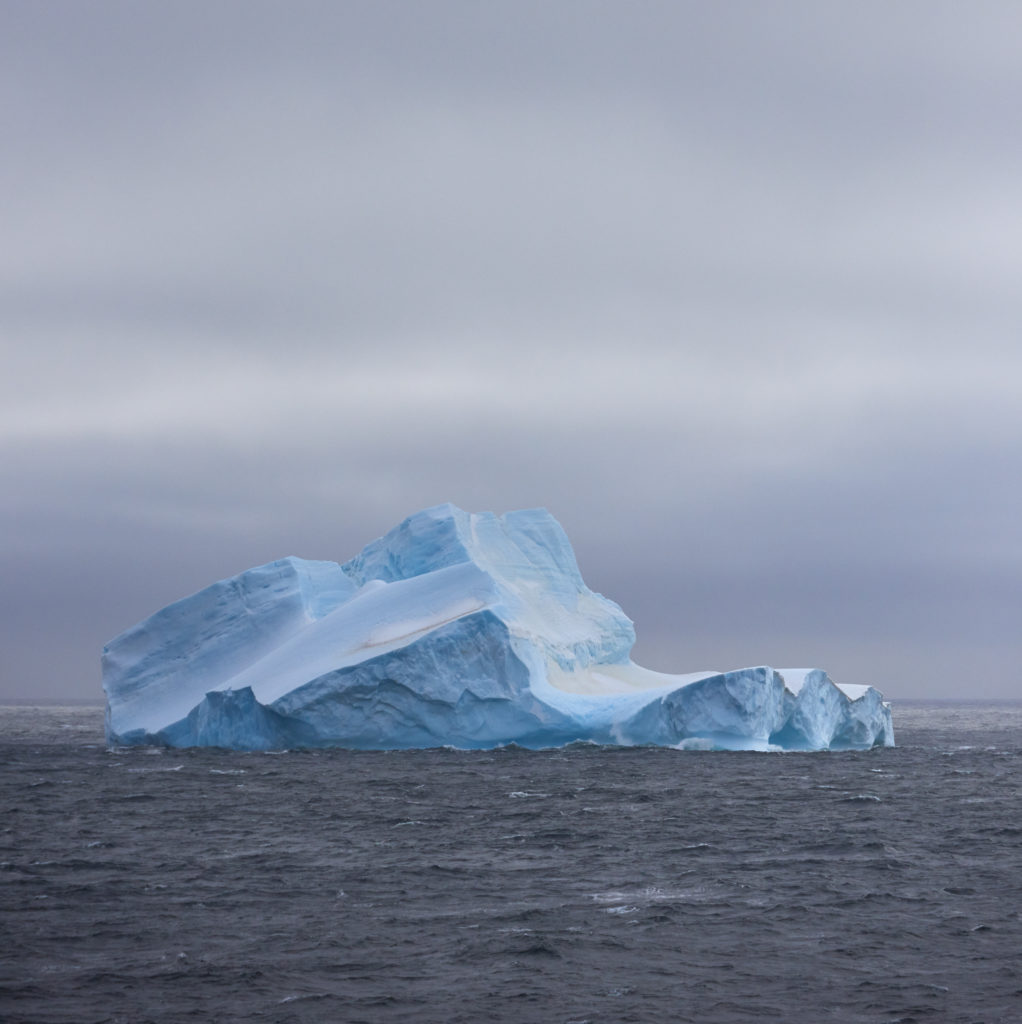
Today there are a lot of choices for cruising to Antarctica, within a considerable price span and a variation of the main focus: whales, geology, penguins, skiing, and of course, photography. But which one is best suited if you are serious about your hobby? Here are some thoughts born out of experience from a cruise we took in November 2016.
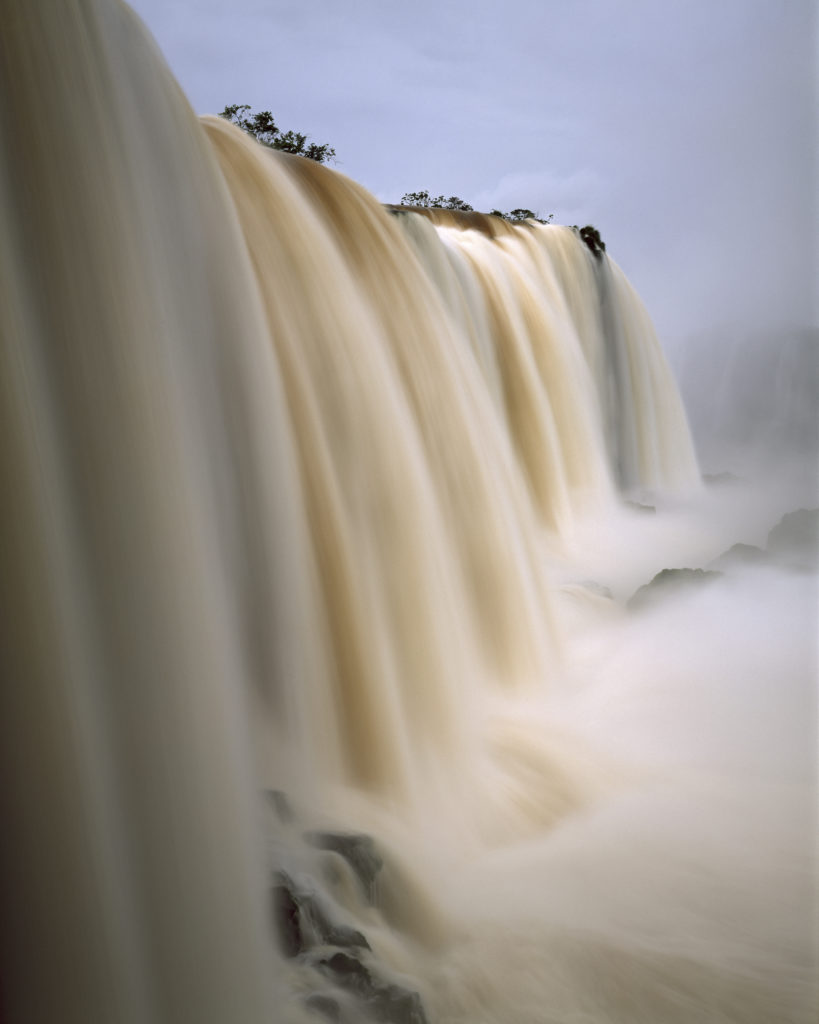
Neutral density (ND) filters reduce the amount of light that enters the lens. ND filters are often used to achieve motion-blur effects with slow shutter speeds, blurring water or cloud motion, reducing depth of field in very bright light (when 1/4000 or 1/8000 of a second is not short enough for the large aperture), or to reduce the visibility of moving persons.
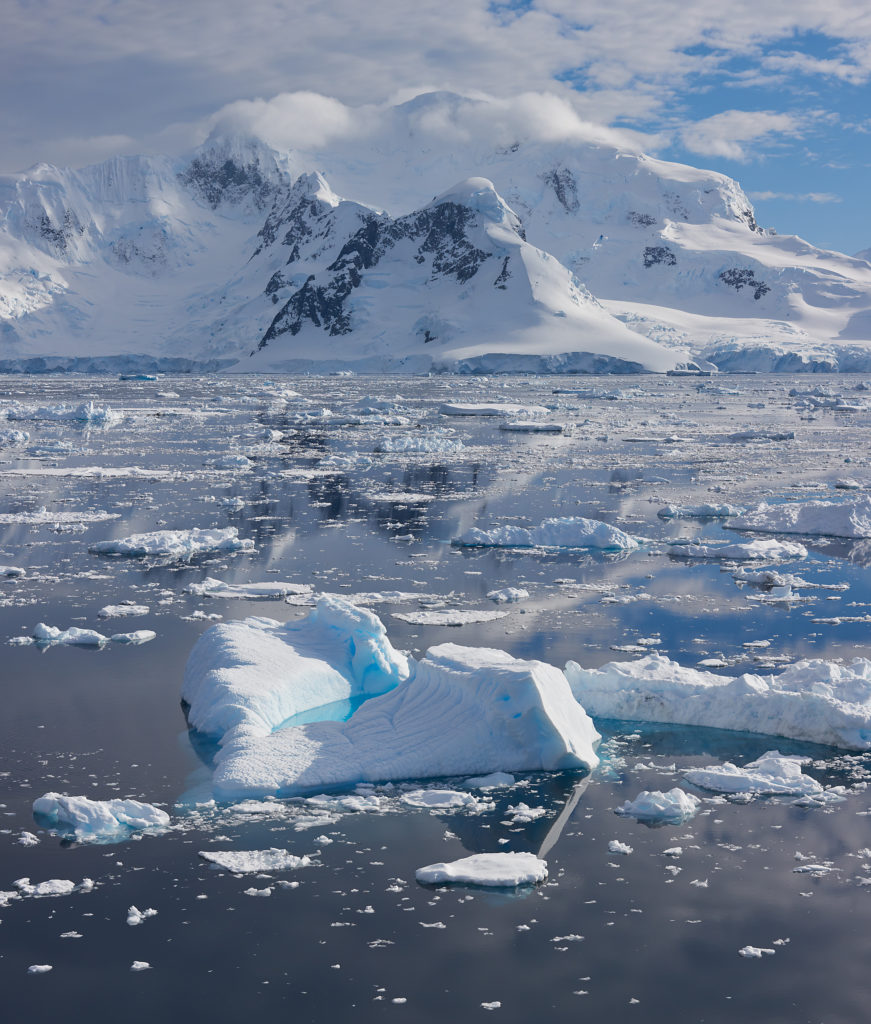
If you don’t want to read the rest, in short, the new Nikon 70-200 f/2.8 has found its way into my bag. The lens has been put through its paces during a recent trip to Antarctica, where it accounted for about 80% of all images. Built quality is on a par with the predecessor model, i.e., the now typical magnesium alloy and polycarbonate shell over a metal core construction. Micro contrast and edge-sharpness has improved visibly at all focal lengths and the focus breathing (change of magnification ratio) at close-focus distance has been minimised. I haven’t blown the trumpet for Nikon’s releases recently but here I can conclude with a highly recommended rating.
Because I mislike posting images bar any composition and subject value for mere lens testing, let’s start with some eye-candy from the Antarctic peninsula.
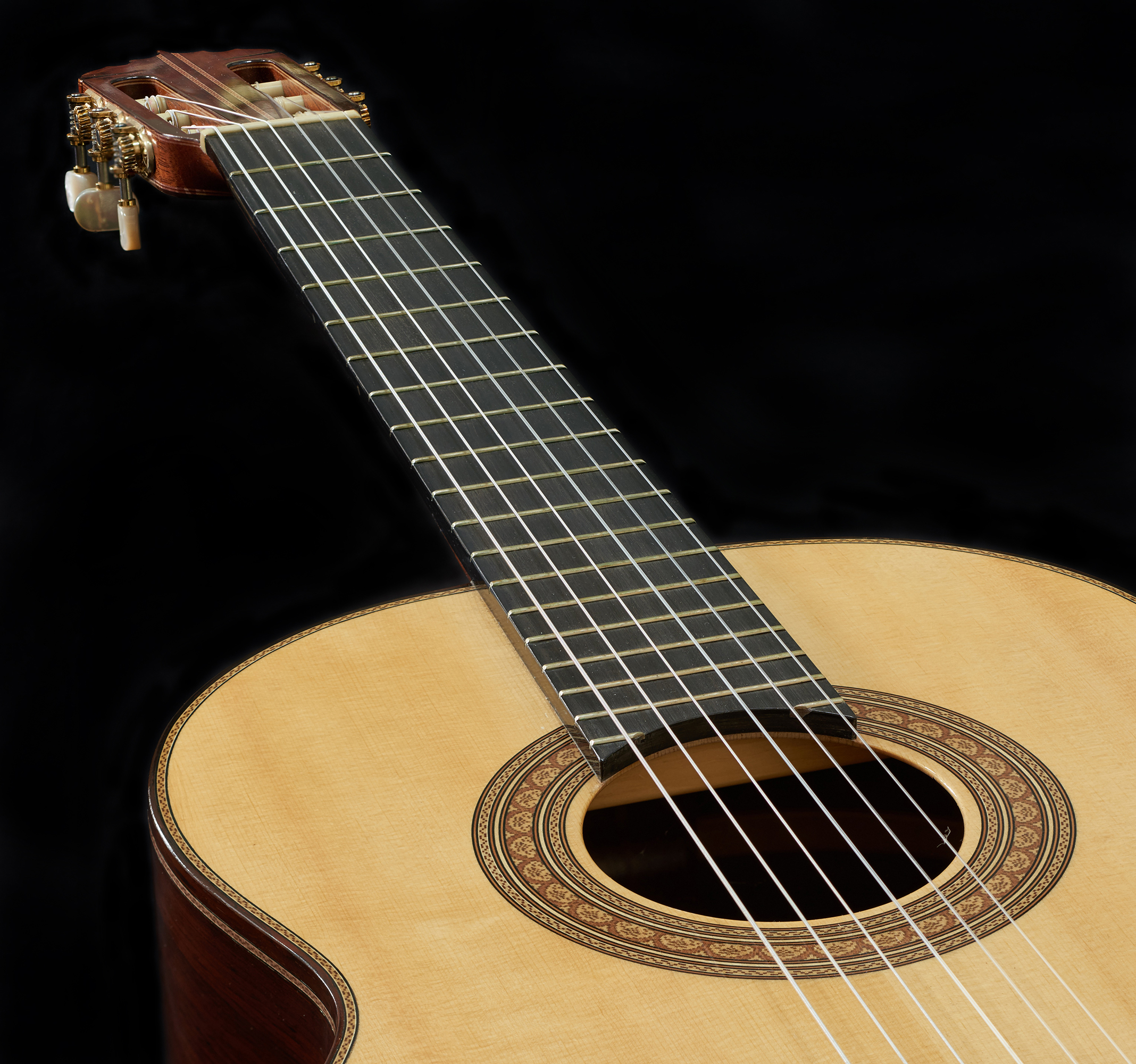
Now as part 1 of this post has had time to settle, let’s press on. Focus stacking is one of the techniques know as Computational Photography, which include panorama stitch, high-resolution sensor shift, multi-exposure HDR, and light field. All these techniques involve multiple images that are blended in post-processing to a new type of single image or scene representation; opposite to techniques in digital photography that work on a single capture, such as filtering and color adjustments.
These techniques may promt the question about ethics in photography. I have absolutely no problem with time-lapsing out people, for example. Over-saturation and over-sharpening, or turning the colors of a lake in Scotland to those of the waters at Anse La Digue is another matter. And nobody would consider the surrealistic photo-illustrations of David LaChapelle as dishonest work, while this is exactly what Steve McCurry, or his now fired assistant, are accused of producing. In my opinion the problem lies not in the image itself, but its incoherent caption and the false message that the image is supposed to support. But I am digressing.
Focus stacking is particularly useful in situations where the scene has a large range of depths in the subject space compared to the shallow depth of field obtained for a given sensor size, focal length, and aperture combination. It will also be a way to make sense of the future FF sensors with 50+ megapixels, where diffraction will counteract the increase of accuaty by stopping down and compromise image quality for depth of field. Moreover, focus stacking can be useful to reduce noise in astrophotography. So there is nothing dishonest here; it is an attempt to optimize the conflicting elements of image quality: noise, diffraction, lens-aberations, and depts-of-field.
There is, of course, the alternative of using tilt-shift lenses, but this is constrained to inclined focal planes (continuous depth maps), for example in landscape photography. The subject of the image below would also qualify.
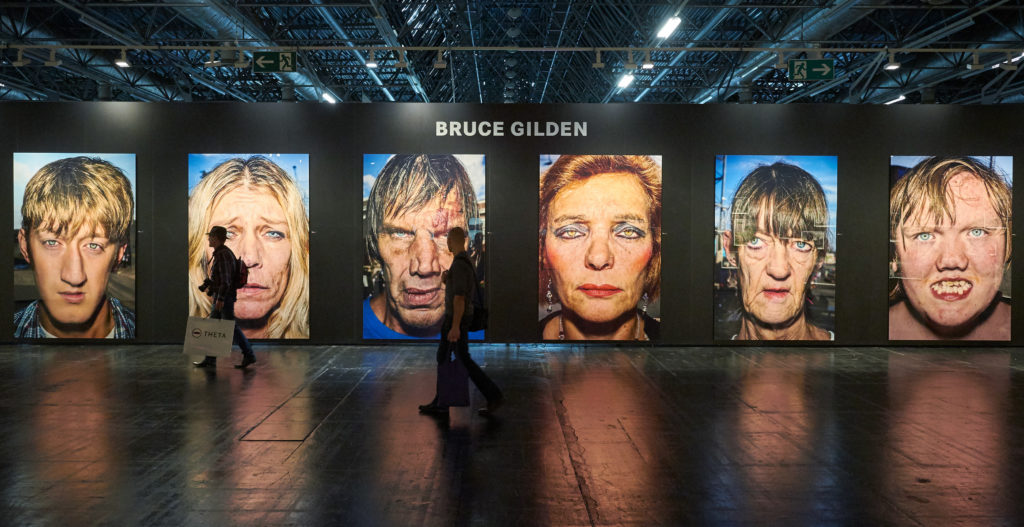
I am back from Photokina; what used to be the world’s largest trade fair for the imaging industry has turned into an event for the generation selfie: drone airport, video-blogs, action-camera arena, and yes, Mazda car exhibition. More gadgets than gear.
In any case, it is unlikely to discover stuff that has not been already discussed at the numerous rumor sites. Camera manufacturers have been launching new products all year, reports, tests and even videos are uploaded within hours of release and progress has become so incremental that there isn’t anything that shouts game-changer. For hands on experience with new equipment, it’s better to negotiate with a dealer or to sign up for a demonstration. What triggered me were not so much the new camera releases but rather the photographic exhibitions, printers and papers, and the future directions in photography at large.
I have to give it to Leica for organising the exhibition “Masters of Photography” occupying about 2000 m² of Hall 1 and including Bruce Gilden (Face), Ellen von Unworthy (Wild wild west), Per-Anders Peterson (African catwalk) and Ara Güler (Leica Hall of Fame Award), among others. This alone justified the admission fee. That camera manufacturers advertise and support the printed image makes perfect sense. For sharing on the social media, camera phones are sufficient and even for viewing on the best screens 20 MP is enough. What used to be commonplace about 15 years ago must now be promoted; the images is only complete when printed.
Leica’s booth, on the other hand, looked like any Leica store, augmented by an area that much reminded me about Rolls Royce exhibits at car shows; you don’t really feel welcome. But this marketing strategy seems to pay off. While basically all systems have passed the threshold of sufficiency for most, it makes sense to establish them as luxurious items (Leica M-P 240 Lenny Kravitz Edition, anybody?).
Talking about the Aston Martin, rather, in the world of photographic equipment, the title goes to the Hasselblad X1D. Beautiful nordic design and noble materials, touch screen and a well thought-out menu, with the main functions on dials and buttons. However, the camera cannot be triggered by a sync cable, and because the body has no shutter, the options for third party lenses on mount adapters will be limited. And there is only one central focus point, although focus and recompose is not precise enough for this pixel count. Focus peaking will come with the next firmware upgrade, so they say.
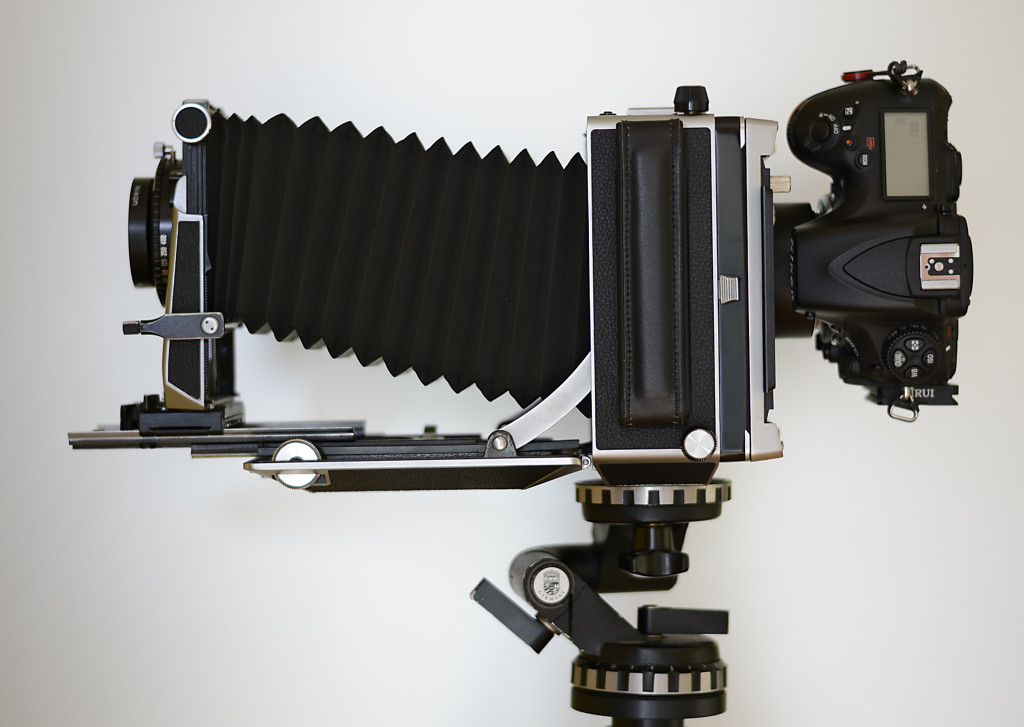
I wouldn’t comment on product announcement unless the product is exceptionally interesting, or as the teaser said, a game changer. However, those words have been (ab)used before, in particular in the mirrorless* world, and have eventually left something to be desired.
For everyone who missed it: Hasselblad have announced a 50 MP medium format** (44×33 mm) mirrorless camera with a 2.36 MP electronic viewfinder (EVF). There also will be a new lens line with leaf shutters, for a large range of shutter speeds (60 minutes to 1/2000 seconds) and with full flash synchronization to boot. Rumors had it for Sony and Fuji for a while and I would not be surprised to see a similar offering by Pentax; possibly at Photokina in September (my flight is booked).
*They really should come up with a new name for those cameras, on the same footing that we are not driving horseless coaches.
**Well, not quite to medium-format film standards ranging from 60×45 to 60×90 and even 60×170 panoramic.
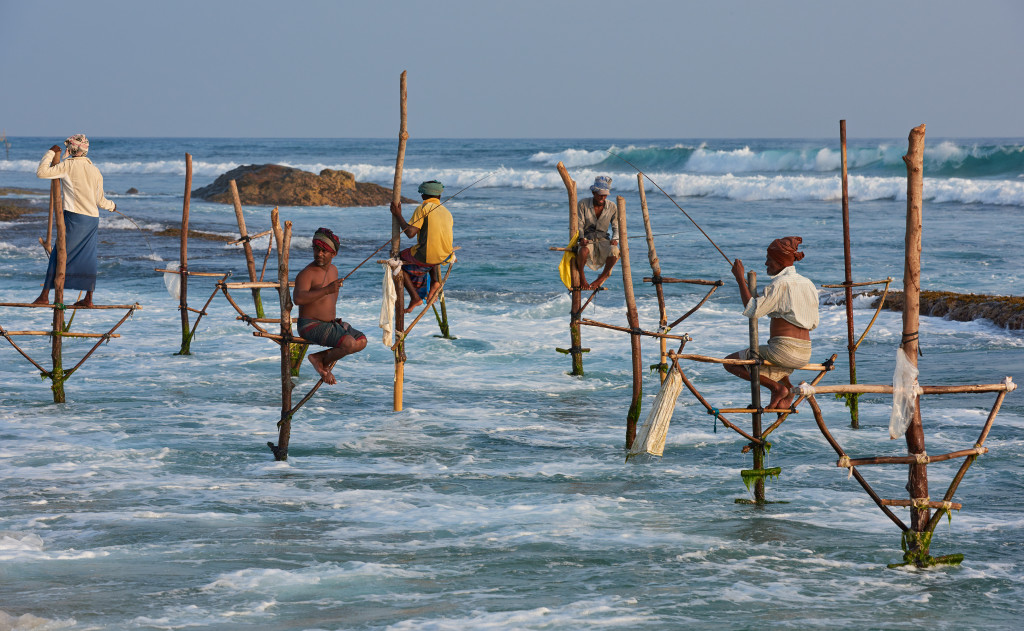
I have been given a camera to test. Not just any camera but one that is not available yet. At first glance it is not even terribly exciting, no Foveon-type full-format sensor, no digital medium-format camera in a Mamiya 7 gestalt, no curved image sensor, and no 36 MP light field camera. It is simply a major update of a full-format DSLR.
I am not allowed to reveal the brand and model name, but I was told I can post a review and images from it. I was lucky enough to have this camera for a test during a recent trip to Sri Lanka (more about this trip in future posts).
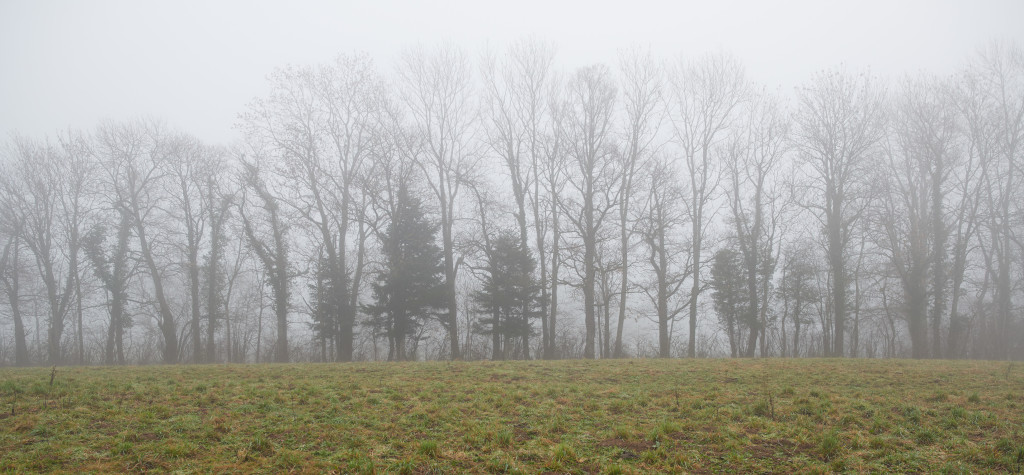
A year without new gear hasn’t been really successful. And although we have seen a lot of new equipment this year, there was nothing to merit a complete system change (to the Sony mirrorless or the Pentax 645, for example).
After the disappointing test of the Nikon 24-70 f/2.8 VR, I thus treated myself to a Zeiss Distagon T* 25 mm f/2.0. Great deals can be had on these “classic line” Zeiss lenses, because they will be replaced by the Milvus lenses. The Milvus 50 f/1.4 and 85 f/1.4 are new designs, while the others are basically avatars in an Otus gestalt.
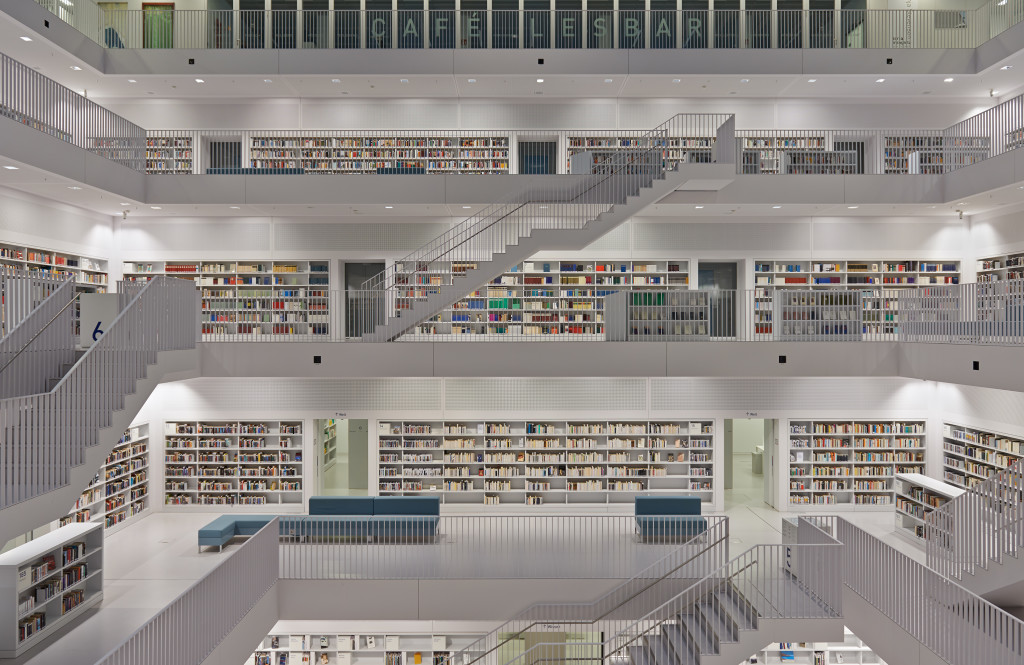
I love my holy trinity of Nikon f/2.8 zoom lenses covering a total range of 14-200 mm focal length. The mid-range zoom AF-S 24-70 mm f/2.8G ED N (short G-version) has become my workhorse and go-to lens with its most versatile zoom range; from wide-angle landscapes and panoramas, to portraits and events. Not that it is lightweight, but the built quality is excellent, the out-of-focus areas are smooth, and there are very little chromatic aberrations along the entire zoom range and at all apertures. The lens snaps into focus instantly and silently and it never hunts, even in most challenging lighting conditions.
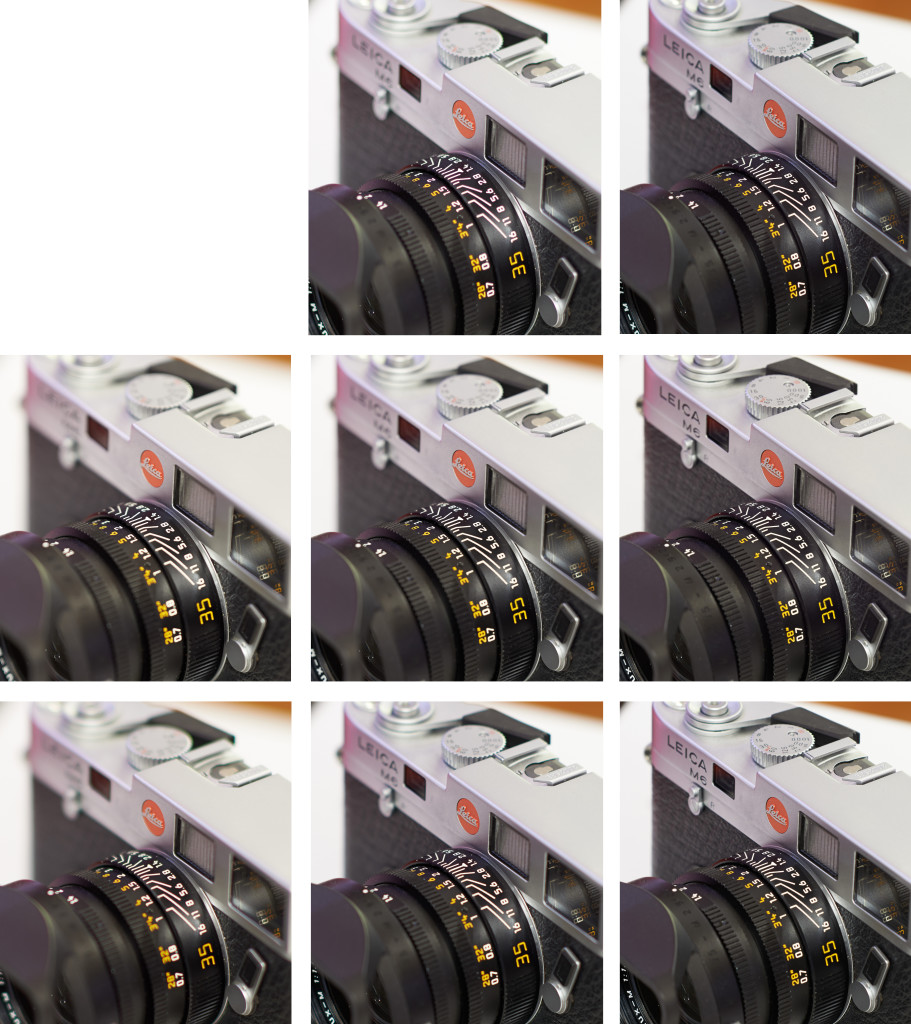
Yesterday I picked up some accessories at Euro-Photo Puig in Geneva, where they had on stock a Zeiss Otus 85 mm f/1.4 Apo Planar T*. This is a mouthful of a name, so I call it Otus 85 from now on. I had the opportunity to take a couple of sample images, however, not out the store’s door as originally planned. It had started snowing, which rendered the scene useless as test for sharpness and micro-contrast. So what else is there to photograph inside a photo store than a nice vintage camera?